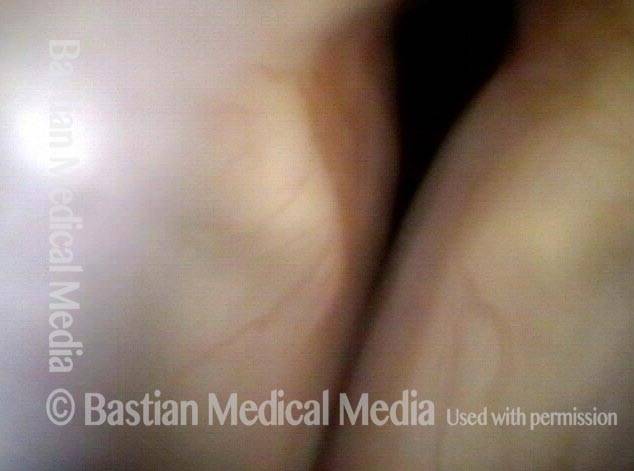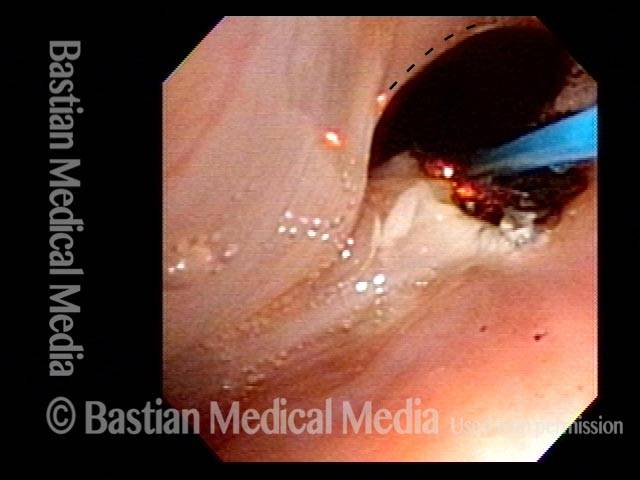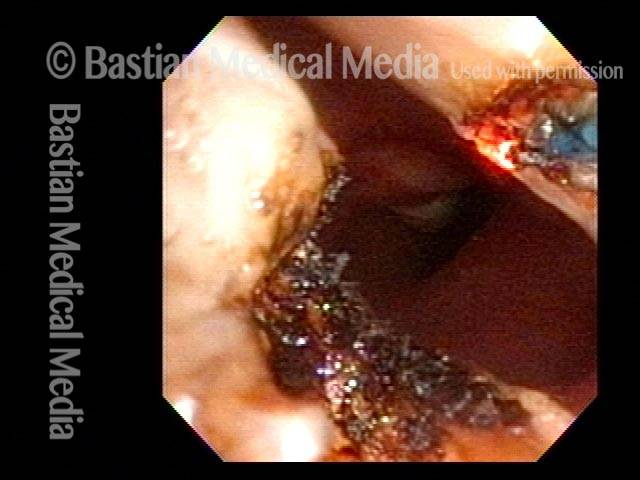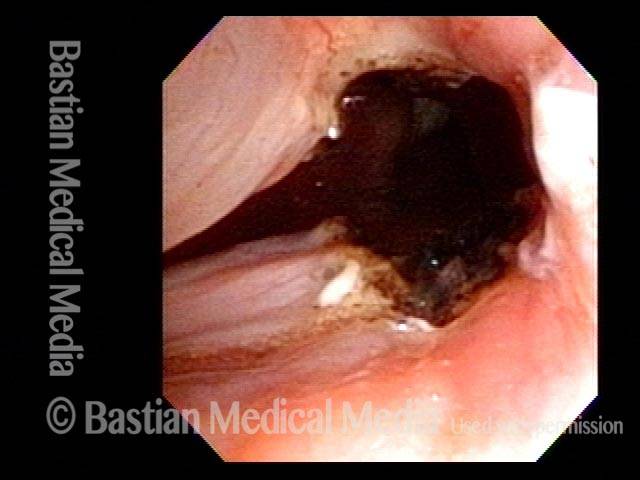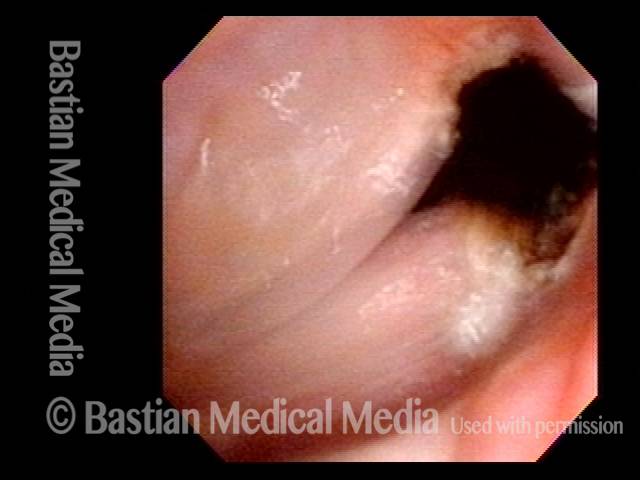General anesthesia is a state of drug-induced, reversible loss of consciousness used, for example, to facilitate surgery. Drugs that induce general anesthesia may be administered intravenously or by inhalation of a gas or vapor.
See also: local anesthesia; topical anesthesia
Office-Based Surgery When General Anesthesia Is too Risky
Involuntary inspiratory voice (1 of 6)
This elderly man is tracheotomy-dependent due to inability to open the vocal cords. Here while breathing in, there is a posterior “keyhole” from the divots caused by pressure necrosis of the breathing tube. Still, due to inspiratory airstream, he produces involuntary inspiratory voice. General anesthesia for laser widening of the airway (posterior commissuroplasty) would be very risky due to his diabetes and many other medical problems. Hence, the decision to attempt this with patient awake and sitting in a chair.
Involuntary inspiratory voice (1 of 6)
This elderly man is tracheotomy-dependent due to inability to open the vocal cords. Here while breathing in, there is a posterior “keyhole” from the divots caused by pressure necrosis of the breathing tube. Still, due to inspiratory airstream, he produces involuntary inspiratory voice. General anesthesia for laser widening of the airway (posterior commissuroplasty) would be very risky due to his diabetes and many other medical problems. Hence, the decision to attempt this with patient awake and sitting in a chair.
Laser posterior commissuroplasty (2 of 6)
The posterior right vocal cord is injected with lidocaine with epinephrine, in preparation for office laser posterior commissuroplasty. F = false vocal cord. T = true vocal cord, near its posterior end. The left vocal cord is injected similarly prior to the procedure that follows.
Laser posterior commissuroplasty (2 of 6)
The posterior right vocal cord is injected with lidocaine with epinephrine, in preparation for office laser posterior commissuroplasty. F = false vocal cord. T = true vocal cord, near its posterior end. The left vocal cord is injected similarly prior to the procedure that follows.
During the commissuroplasty (3 of 6)
The thulium laser fiber is being used to excavate the posterior commissure. Note the existing divot of the opposite (right) vocal cord (dotted lines) which will also be enlarged (next photos).
During the commissuroplasty (3 of 6)
The thulium laser fiber is being used to excavate the posterior commissure. Note the existing divot of the opposite (right) vocal cord (dotted lines) which will also be enlarged (next photos).
Deepening divot (4 of 6)
With view rotated clockwise approximately 45 degrees, work is commencing to deepen the right vocal cord divot.
Deepening divot (4 of 6)
With view rotated clockwise approximately 45 degrees, work is commencing to deepen the right vocal cord divot.
Inspiratory indrawing decreased (5 of 6)
At the conclusion of the procedure. Not only is the ‘keyhole’ seen in photo 1 larger, but inspiratory indrawing of the rest of the vocal cords is greatly diminished.
Inspiratory indrawing decreased (5 of 6)
At the conclusion of the procedure. Not only is the ‘keyhole’ seen in photo 1 larger, but inspiratory indrawing of the rest of the vocal cords is greatly diminished.
Phonation (6 of 6)
Now phonating, voice is similar to the beginning of the procedure, because the vibrating part of the vocal cord was not disturbed. Of course, number of words per breath is slightly lower, due to increased use of air through the keyhole—air wasting.
Phonation (6 of 6)
Now phonating, voice is similar to the beginning of the procedure, because the vibrating part of the vocal cord was not disturbed. Of course, number of words per breath is slightly lower, due to increased use of air through the keyhole—air wasting.
Tagged Other useful terms, Treatment
